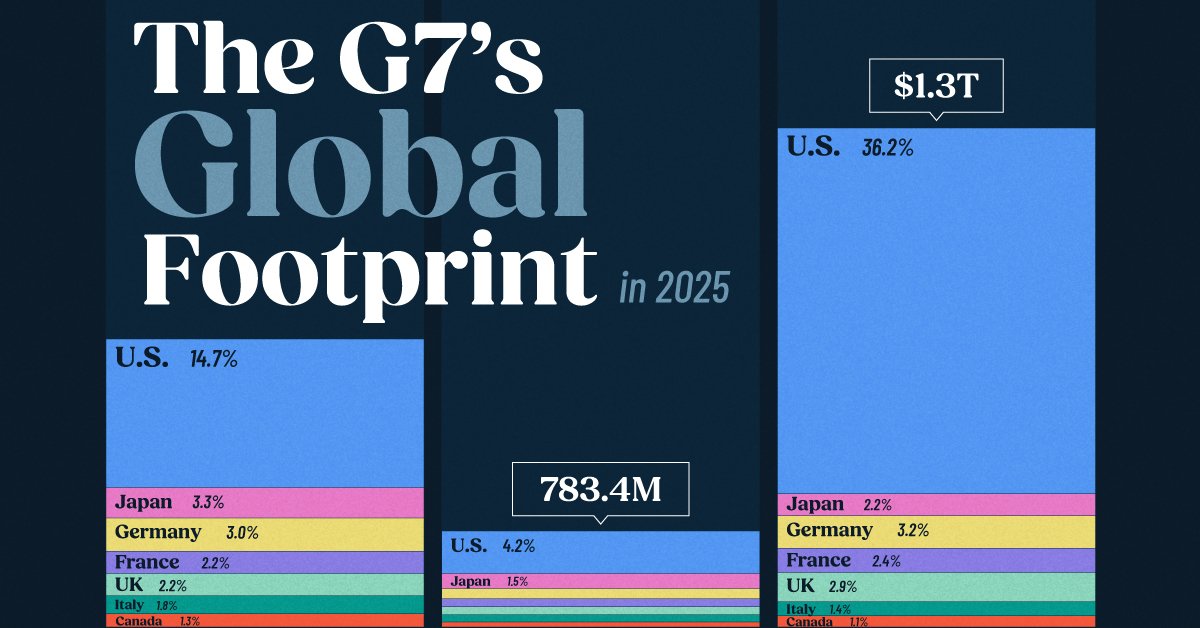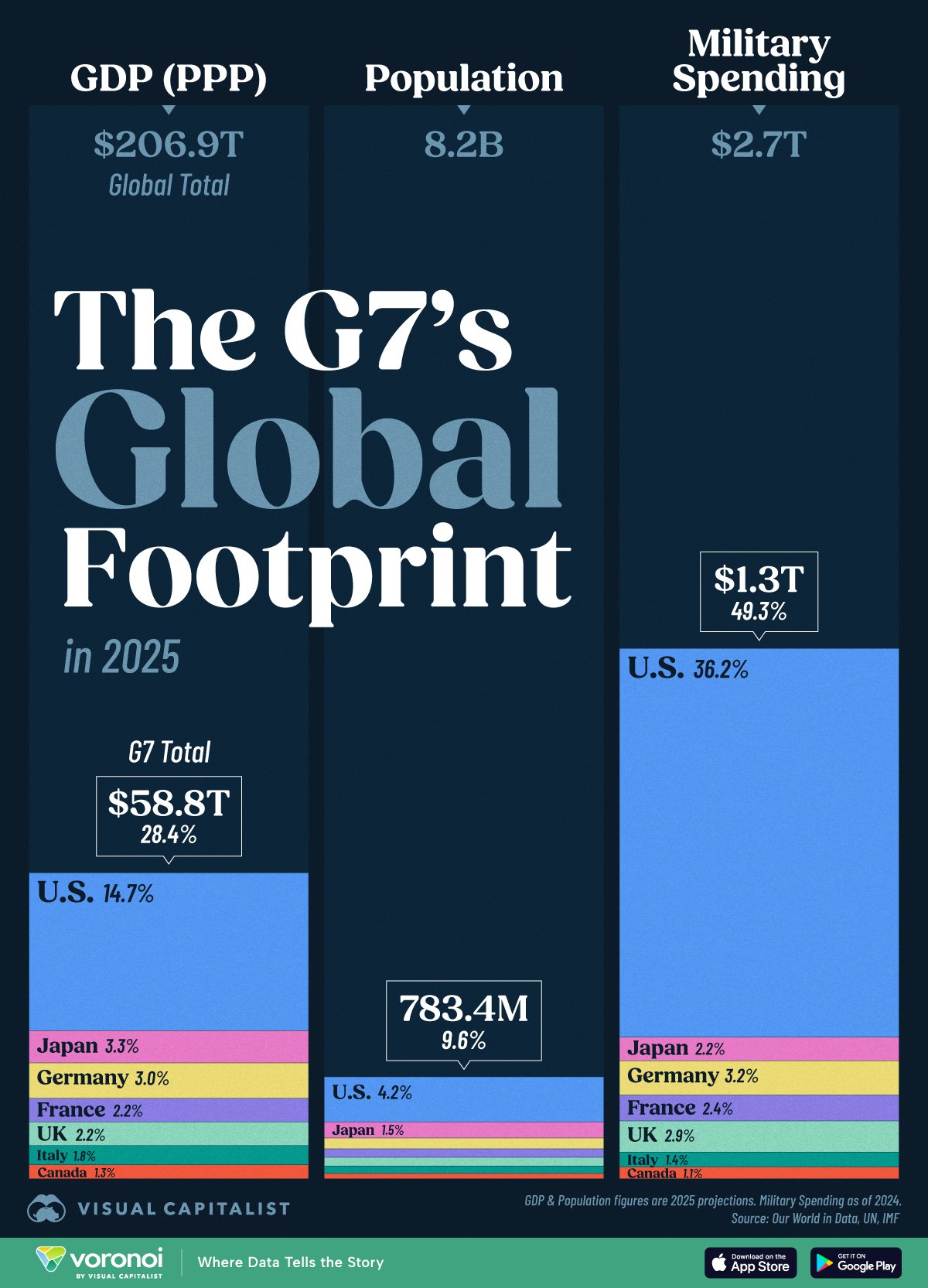G7 vs. the World: GDP, Population, and Military Strength
This was originally posted on our Voronoi app. Download the app for free on iOS or Android and discover incredible data-driven charts from a variety of trusted sources.
Key Takeaways
- G7 countries represent 28.4% of global GDP (PPP) today, down from about 50% in the 1980s
- The G7 accounts for only 9.6% of the world’s population and nearly half (49.3%) of military spending
- The G7 punches above its weight in terms of military spending, thanks to the U.S.
The G7—comprising the United States, Japan, Germany, France, the UK, Italy, and Canada—wields considerable global influence, despite its declining share of the global economy and population.
In this infographic, we visualize the G7’s global influence in 2025 based on global GDP, population, and military spending data.
Data & Discussion
The data for this visualization was sourced from the UN World Population Prospects 2024, the IMF, and Our World in Data.
| Country | GDP (PPP) (%) | Population (%) | Military Spending (%) |
|---|---|---|---|
 United States United States |
14.7 | 4.2 | 36.2 |
 Japan Japan |
3.3 | 1.5 | 2.2 |
 Germany Germany |
3 | 1 | 3.2 |
 France France |
2.2 | 0.8 | 2.4 |
 United Kingdom United Kingdom |
2.2 | 0.8 | 2.9 |
 Italy Italy |
1.8 | 0.7 | 1.4 |
 Canada Canada |
1.3 | 0.5 | 1.1 |
| G7 Total | 28.4 | 9.6 | 49.3 |
| Rest of World | 71.6 | 90.4 | 50.7 |
 The G7’s Shrinking Economic Might
The G7’s Shrinking Economic Might
The G7’s share of global GDP (PPP) in 2025 is projected at 28.4%, which is a sharp drop from its pre-2000s value.
GDP at Purchasing Power Parity (PPP) measures the value of goods and services produced in a country, adjusted for differences in cost of living and inflation.
The G7’s decline reflects shifts in global economic power towards Asia and other developing regions. The group’s largest economy is the U.S., which accounts for more than the rest of the group combined (14.7% vs 13.8%).
 Modest Population Representation
Modest Population Representation
Despite its 28.4% share of the world economy, the G7 represents only 9.6% of the population, at around 783 million people. Advanced economies like those in the G7 have low fertility rates and aging populations, meaning their share of global population will continue to fall.
Interestingly, these demographic challenges are now affecting China as well, whose population peaked in 2021 and is beginning a long-term decline.
 Concentrated Military Spending
Concentrated Military Spending
Where the G7 has the most global influence is in defense, with G7 countries collectively accounting for 49.3% of global military spending ($1.3 trillion).
The U.S. alone makes up 36.2% , dwarfing the next top countries as we’ve shown in this recent graphic. Together, G7 nations play a central role in NATO, global arms exports, and military alliances shaping international security.
Learn More on the Voronoi App 
If you enjoyed today’s post, check out How G7 Countries Compare to America’s Poorest States on Voronoi, the new app from Visual Capitalist.
















